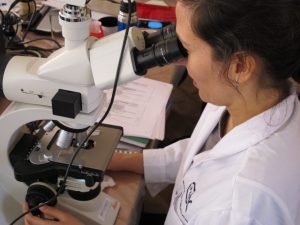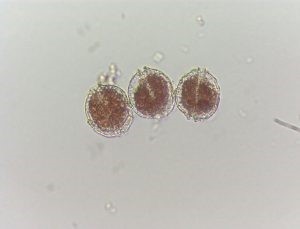IFOP Exhibits about Progress Status on Red Tide Program
July 10th, 2018
Financed by Aysén Regional Government it aims to identify new benthic resource banks and increase information access frequency associated with marine biotoxins in seafood presence or absence, at Program of Management and Monitoring of Red Tide current monitoring stations.
At the end of June, Aysén Regional Government, through Productive Development, Science, Technology and Innovation Commissions, convened (IFOP) Fisheries Development Institute to show progress status of Monitoring Improvement of Harmful Algal Blooms Transfer Program. (FANs) at Aysén Region .
This initiative presentation framed in the Special Extreme Zone Development Plan (PEDZE), was in charge of Fisheries Promotion Institute researcher Hernán Padilla, who told the audience that the Program objective is to increase artisanal fishermen productive capacity, Through benthic resources extraction in regional coast areas affected by marine toxins, whose development has been channeled through 2 specific objectives.
The first, aimed at “Identifying new benthic resource banks distributed in areas close to coastal towns, which have extraction capacity and allow extractive work according to current regulations.” Among aspects achieved, identification of new natural banks stands out at historically exploited sectors adjacent areas, direct evaluation in 4 clam banks that presented greater productive capacity, and estimates of exploitable fraction according to their abundance and size structure. These banks were evaluated between October and December of 2017 by Aysén SEREMI (Health Ministry representatives), with the objective of guaranteeing extractive work without risk to public health. This activity will be resumed during this year, to guarantee seafood quality according to toxins concentration .
The second objective, “Management strategy implementation in order to increase access to information associated with marine biotoxins presence or absence frequency in seafood, in Red Tide Management and Monitoring Program current monitoring stations “, whose execution was compromised after evaluating new banks; highlights selection of 4 stations that have greatest abundance of clam resource, which will increase sampling frequency (harmful phytoplankton and seafood) from monthly to biweekly.
This increase in sampling frequency, after spring-summer harmful algal blooms occurrence, will allow to support more accurately closures lifting, in periods when shellfish toxicity decreases, when they show an amount of equivalent paralytic toxin or lower than normative limit.
Presented advances were well received by Regional Councilors who make up both committees, stating their willingness and interest in supporting this type of initiative, which is responsible for generating specific inputs for artisanal fisheries in the Aysén region.
